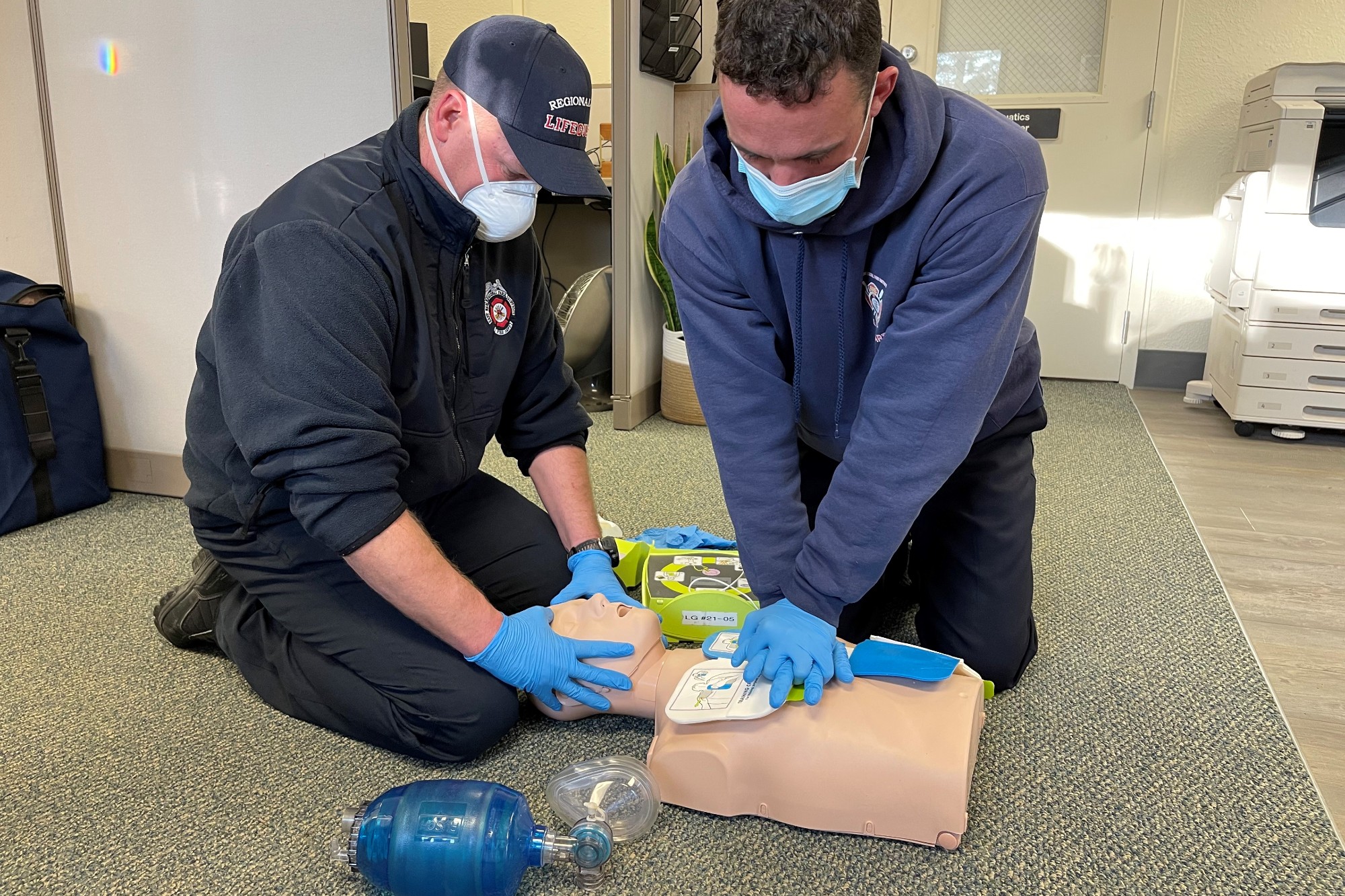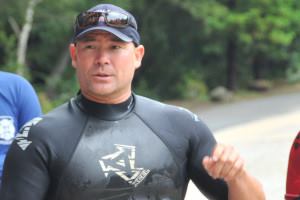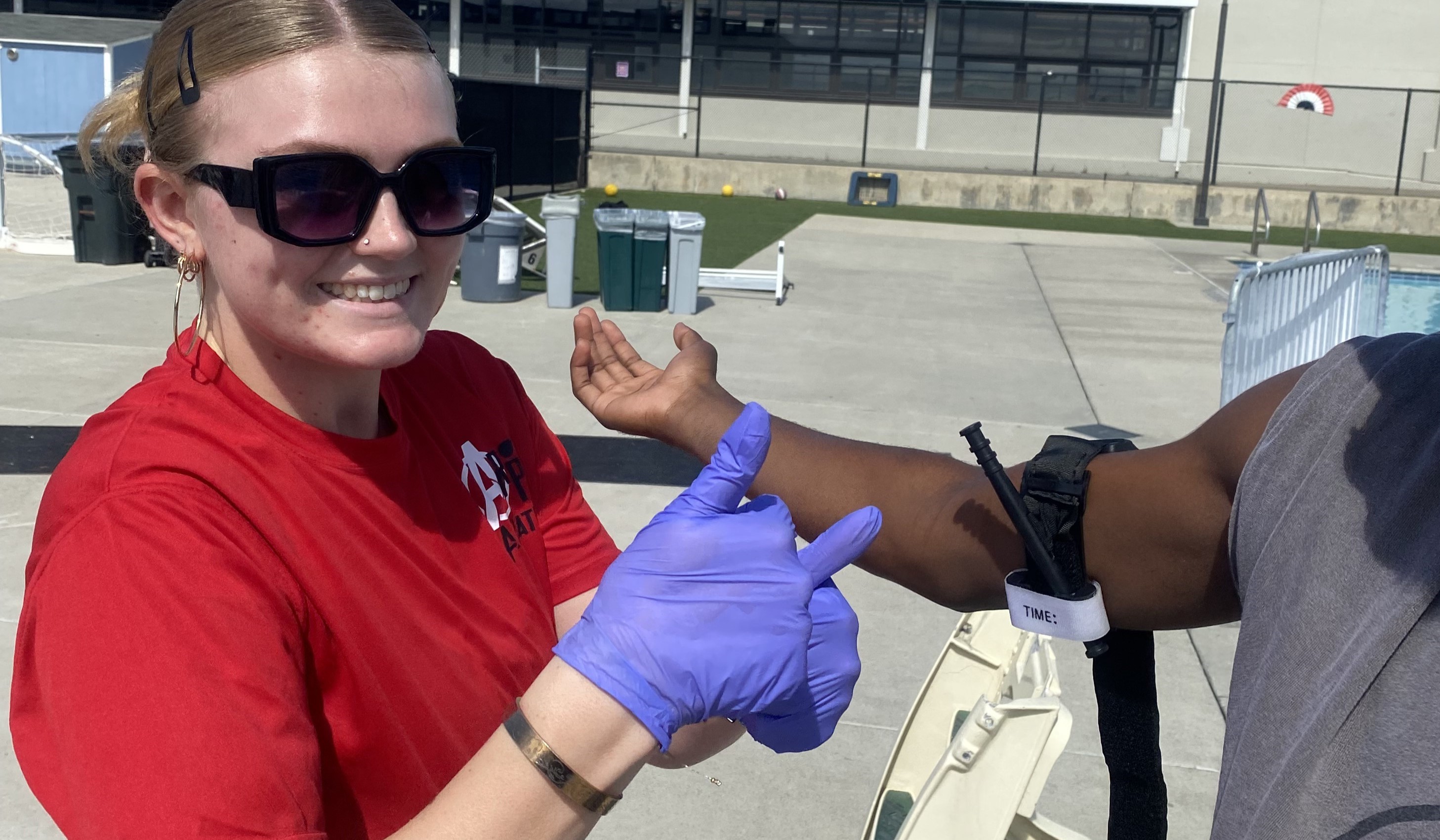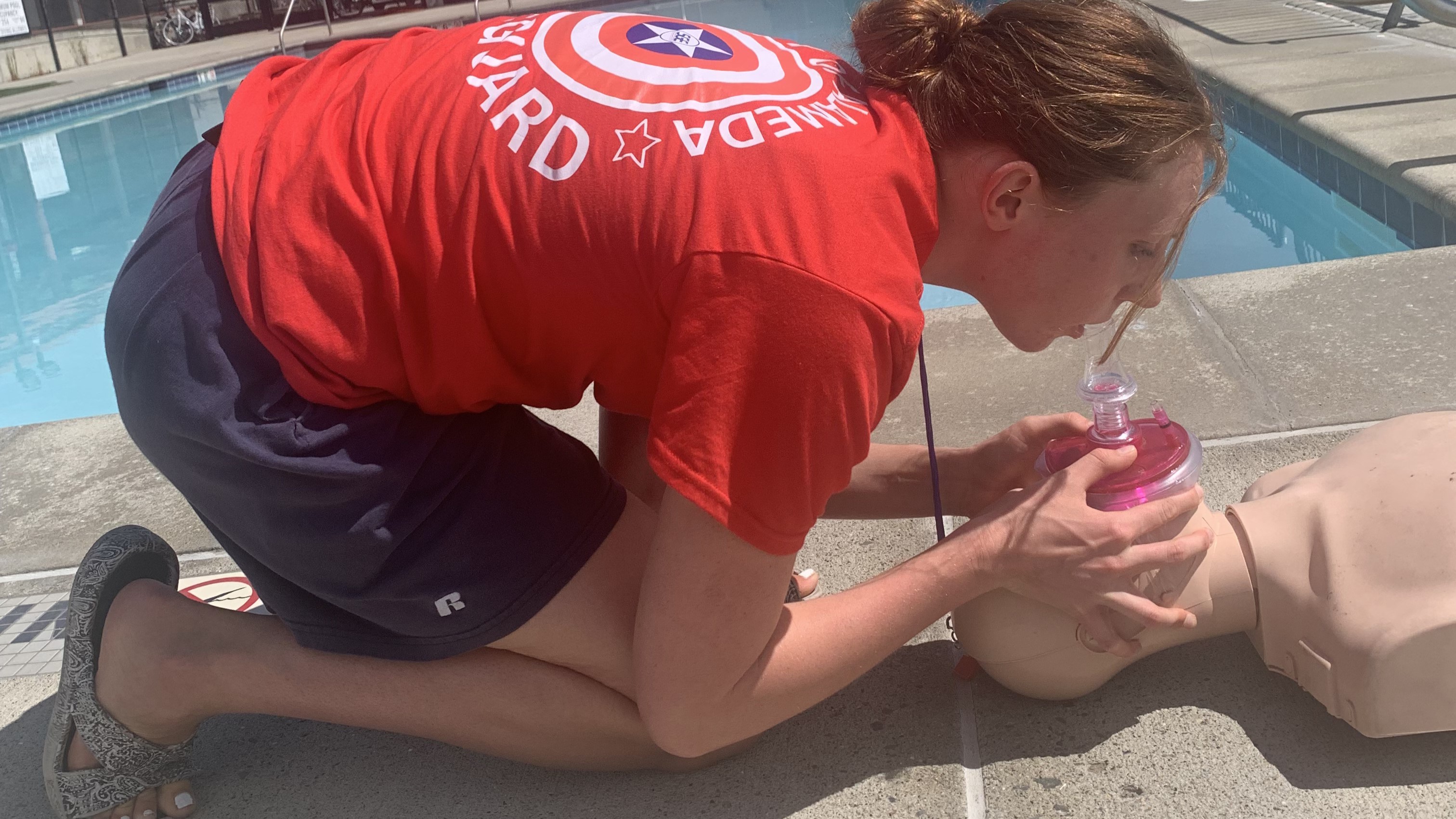When developing in-service training for adult CPR with AED, focus on three scenarios: heart attack on land, heart attack in the water, and drowning.
The first two deal with adults who have a pre-existing condition leading to cardiac arrest. In the third scenario, the victim’s heart stops because of suffocation caused by being submerged or immersed in a liquid.
Let’s review the level of proficiency that the single lifeguard is expected to have when providing care to an adult who suffers cardiac arrest on land:
• Activating EMS
• Safely and quickly rolling/moving a victim
• Performing effective, efficient compressions
• Performing effective and efficient ventilations with a resuscitation mask
• Performing effective and efficient ventilations with a BVM when secondary help arrives
• Removing clothing to apply AED pads
• Effective use of an AED
• Getting assistance from the public
When looking at a single lifeguard’s response to a heart attack on land, many factors will be challenging and can hamper effectiveness in providing timely patient care. For instance, if the lifeguard is in the tower guarding a busy pool when the incident occurs, it will be challenging to clear the crowded pool, activate EMS, access an AED quickly, to ask for assistance in directing Fire/Police/EMS to the patient’s location, control the crowd, monitor/maintain an empty pool, or provide effective compressions and ventilations.
As a reminder, there is a chance the lifeguard will be the most highly trained individual there, which could position them to not only request help from the public but also instruct visitors on how to help.
Two additional factors to address during the in-service: response time for Fire/EMS and the average weight of an adult. The national average of time it takes for Fire/EMS to respond to a scene is 7 minutes in urban areas, 14 minutes in rural areas, and somewhere in between for suburbs. This means lifeguards should have the endurance to provide 20-40 cycles of compressions and ventilations.
Besides endurance, lifeguards should have the physical strength to safely move, roll, or drag an adult sized victim. The average weight on an American adult is 160-200 pounds, while the average weight of 16-year-old lifeguard is between 119-134 pounds. As the trainer, it is your responsibility to ensure your lifeguards use proper ergonomics when moving large victims. Let’s go over two drills that address single lifeguard skills and building endurance in performing CPR.
LONE LIFEGUARD PROGRESSION DRILL: The lone lifeguard will start with an AED in hand. A manikin will be face up on the ground.
Objective: The lifeguard will turn on the AED and apply AED pads to the manikin’s chest.
Timing goal: 10-15 seconds to complete the objective. Once the lifeguard is proficient, add the following steps to build out the drill. NOTE: Do not move forward in the progression until the lifeguard is proficient with each add-on.
• Manikin is wearing a shirt that needs to be cut away or removed. (10 seconds added)
• Manikin is in a lateral or prone position and needs to be rolled before care can be provided. (5 seconds added)
• Lifeguard needs to do a primary assessment before applying AED. (10 seconds added)
• Lifeguard needs to size up the scene and glove up. (10 seconds added)
• Lifeguard needs to check for responsiveness and activate the Emergency Action Plan. (10 seconds added)
The entire Lone Lifeguard Progression: The lifeguard checks for responsiveness, activates EAP, gloves up, rolls the victim, performs a primary assessment, exposes the victim’s chest, turns on the AED and applies AED pads. The timing goal is 50-60 seconds. Once the lifeguard is proficient, add these challenges:
• AED is not with the lifeguard when they arrive.
• The lifeguard must speak with 911 throughout the entire drill.
• The lifeguard is empowered to request assistance from one or more bystanders.
• The lifeguard is required to perform 2 minutes of CPR after the AED analysis.
URBAN CPR DRILL: Four lifeguards will work on an adult manikin. An AED and BVM will be used.
Objective: Lifeguards will perform effective, uninterrupted, two-rescuer CPR with AED use. Ventilations will be provided by a BVM.
Timing goal: 8 minutes. Once the lifeguard team is proficient, progress to these variations:
• Provide ventilations with resuscitation masks.
• Extend the drill to 12 minutes.
• Extend the drill to 16 minutes.
• Only 2 lifeguards perform the drill.
Both drills above should help build the readiness in your lifeguards when it comes to an adult having a heart attack on land. When it comes to addressing heart attack in the water or adult drowning victims, rapid extrication should be the first step. As mentioned in my last article, the WET/DRY HAND OFF DRILL will work well in building extrication proficiency in your rescue team. The main difference will be the weight of an adult (160 to 200 lbs.) compared to a child (89 to 92 lbs.), along with the difficulty or ease at moving an unconscious victim. Once the lifeguards are proficient in the extrication drill, progress to these additional challenges:
• The victim’s chest is wet and needs to be dried prior to AED pad application.
• Victim is wearing a rashguard or upper body swimsuit that needs to be removed and chest needs to be dried before AED pads application.
• Victim is found during lap swim or masters swimming (lane lines are in place).
• Drill is done in early morning time or at night.
When looking at Adult CPR, early recognition and activation of 911 are critical. As a reminder, this step likely will be initiated by staff, but lifeguards should train on how to direct the public to make the 911 call: What’s the location, what is happening, what you need, and what is being done.
Remember, there are many steps to saving a life, some require endurance, strength, and teamwork from both your coworkers and the public.
Good luck and keep training.



